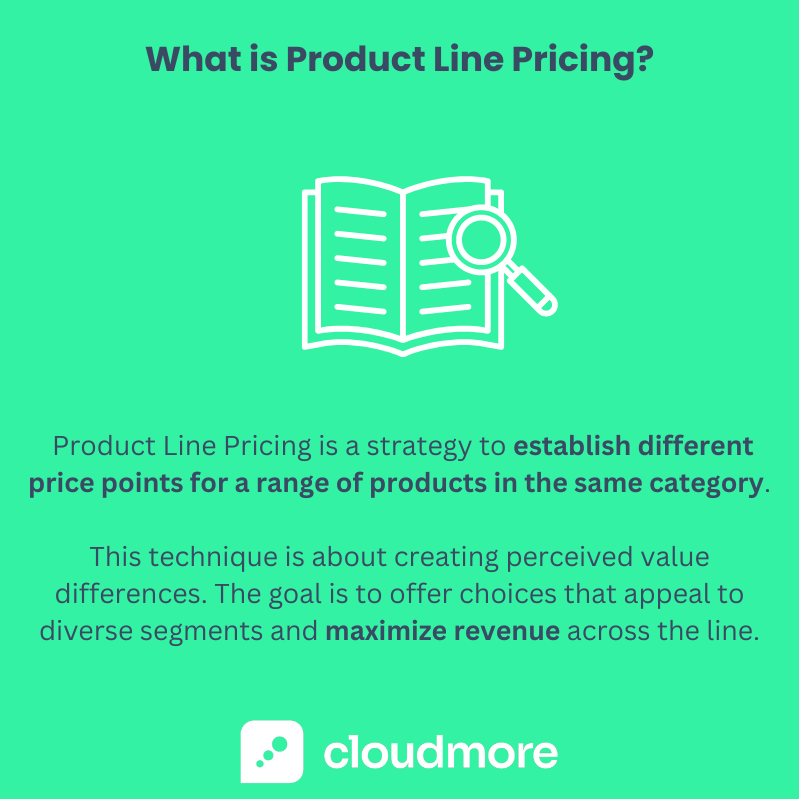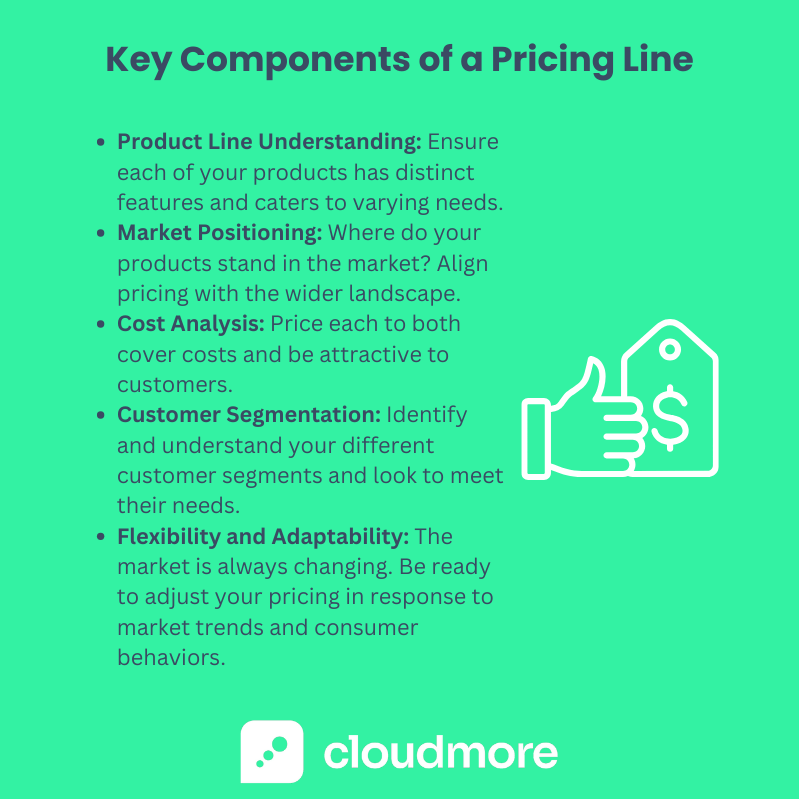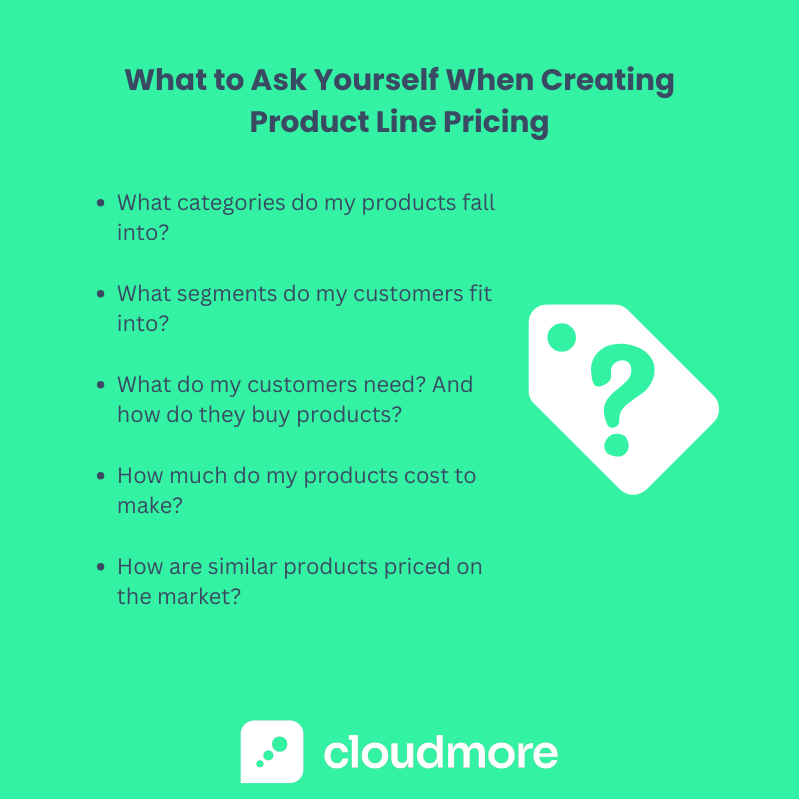Product Line Pricing Strategy - Definition, Methods & Examples
In today's fiercely competitive market, mastering the art of product line pricing isn't just an option; it's a necessity for savvy marketers.
This strategy, a cornerstone of modern marketing, is all about setting different price points for products within the same category, striking a balance between accessibility and premium offerings.
In this article, we'll guide you through the intricacies of product line pricing.
You'll learn how to define and implement a successful product line pricing strategy and understand its role in marketing.
We'll also delve into real-world examples, showcasing how major industry players use this approach to their advantage.
This is a strategy that could revolutionize the way you think about pricing and product development.
This is about shaping customer perception and experience to benefit your bottom line.
Defining Product Line Pricing
Product line pricing is a strategy companies use to establish different price points for a range of products within the same category.

This technique is about setting prices and creating perceived value differences. For instance, in a product line, you might find basic, mid-range, and premium options, each priced accordingly.
The goal here is to offer choices that appeal to diverse customer segments and maximize revenue across the entire line.
The Role of Product Lines in Marketing
Product lines are more than a collection of items – they're a crucial part of your marketing strategy. Understanding what a product line is and its role can be a game changer.
It's about grouping related products to address varied customer needs and enhancing brand identity. Effective product line management ensures that each item contributes to the overall brand narrative, making the collective impact greater than the sum of its parts.
In marketing, this cohesion can lead to stronger customer loyalty and increased sales.
Strategies and Methods in Product Line Pricing
Understanding the strategies and methods that make product line pricing so effective is essential. These approaches are not just about setting prices but also about maximizing profitability and market appeal.
Here, we'll explore the key components and the concept of price lining, which play pivotal roles in this strategy.
Components of a Successful Pricing Line
To build a successful pricing line, several elements must be carefully considered:
- Product Line Understanding: Know your products. What does each item in your product line offer? Ensure each product has distinct features and caters to varying customer needs.
- Market Positioning: Where does each product stand in the market? Align your pricing with how you position each product in the competitive landscape.
- Cost Analysis: Price each product not only to cover costs but also to remain attractive to customers. Balancing cost and customer appeal is critical.
- Customer Segmentation: Identify and understand your different customer segments. Tailor your product line to meet the diverse needs of these groups.
- Flexibility and Adaptability: The market is constantly changing. Be ready to adjust your pricing strategy in response to market trends and consumer behaviors.

A pricing line can become a powerful tool in your marketing arsenal by focusing on these components.
Price Lining and Its Impact
Price lining is a strategic method in which products in a line are priced at different points. This concept, often called 'pricing lining' or 'price points marketing,' is crucial in guiding customer perceptions and choices.
Setting distinct price levels encourages customers to compare within your product range rather than with competitors. This strategy can simplify customer decision-making and lead to increased sales by targeting different consumer segments more effectively.
Understanding and implementing price lining can be a powerful tool in product line pricing, influencing customer behavior and overall profitability.
Examples and Case Studies of Product Line Pricing
Exploring real-world examples of product line pricing offers valuable insights into how this strategy works in various industries. By examining these cases, we can learn how companies successfully implement product line pricing to appeal to a broad customer base and increase profitability.
Real-World Examples of Product Line Pricing
- Telecommunications Industry: The phone market is a classic example of product line pricing. Companies in this sector often offer a base phone model with essential features at a lower price. Higher-priced models are available for customers seeking more advanced features.
- Hospitality Industry: Hotels employ this strategy effectively. They offer various room types, from basic budget rooms to luxurious suites. Each category is priced differently, allowing them to serve customers with different needs and budgets.
- Automobile Industry: The car market, represented by brands like Toyota and their Lexus line, showcases product line pricing. These companies offer a range of vehicles, from basic, affordable models to high-end, luxury ones, catering to different customer segments based on their budgets and preferences.
Analyzing Success and Failures
A successful product line pricing strategy involves understanding customer segments and offering products catering to their needs and budgets.
For example, a company might offer a basic product at a lower price to attract price-sensitive customers. At the same time, they might offer more advanced products with higher prices to appeal to customers seeking premium features.
The key to success in product line pricing is ensuring that each product in the line complements the others rather than competing with them. This approach helps maximize the market share and profitability for each product category.
Product line pricing is a versatile and effective strategy that, when executed well, can significantly expand a company's market reach and profitability. By offering products at various price points, companies can appeal to a broader range of customers, enhancing their competitive edge in the market.
Implementing Product Line Pricing in Your Business
Introducing product line pricing into your business can be a game-changer in attracting and retaining customers. Whether you're a budding entrepreneur or an established company looking to revamp your pricing strategy, implementing product line pricing can be a strategic move toward growth and profitability.
Steps to Develop a Product Line Pricing Strategy
- Analyze Your Product Line: Understand what your product line entails. Identify and categorize the different products based on features, quality, and customer segments they appeal to.
- Market Research: Conduct thorough market research to understand customer needs, preferences, and buying behavior. This helps in positioning each product in your line appropriately.
- Cost Analysis: Evaluate the cost of producing each item in your product line. This step is crucial to ensure your pricing covers costs while remaining competitive.
- Competitor Analysis: Look at how your competitors are pricing similar products. This will help you understand the market standards and find a competitive edge.
- Set Price Points: Based on your analysis, set distinct price points for different products in your line. Ensure these price points reflect the value offered by each product.
- Customer Segmentation: Segment your customers based on their needs and purchasing power. Tailor your product line to cater to these segments effectively.
- Monitor and Adjust: After implementing your product line pricing strategy, continuously monitor its performance. Be ready to adjust prices based on market trends, customer feedback, and sales data.

Following these steps, you can effectively implement a product line pricing strategy that resonates with your target audience, maximizes your revenue potential, and strengthens your market position.
Key Takeaways about Product Line Pricing
As we wrap up our exploration of product line pricing, it's clear that this strategy is more than just a pricing model; it's a comprehensive approach to market segmentation and customer satisfaction. Effective product line pricing allows businesses to cater to diverse customer needs, maximize revenue, and enhance brand perception.
- Flexibility and Customer Focus: Product line pricing offers the flexibility to cater to different customer segments. Whether it's a basic product or a premium offering, there's something for everyone.
- Strategic Positioning: This pricing strategy helps strategically position products in the market. It's not just about competing on price but also about offering value at different levels.
- Increased Profitability: Product line pricing can improve sales and profitability by appealing to a broader customer base and encouraging upgrades.
- Brand Strengthening: Differentiating products in a line contributes to a stronger brand identity. It helps in creating a narrative that resonates with a diverse customer base.
Remember, product line pricing is not a one-size-fits-all solution. It requires careful analysis, strategic planning, and ongoing adjustments to align with market dynamics and customer expectations.
Share this
You May Also Like
These Related Stories

A super quick round-up of some of the leading tech themes for 2024

Commerce 4.0 versus the Subscription Economy: The Evolution of Business Transactions


